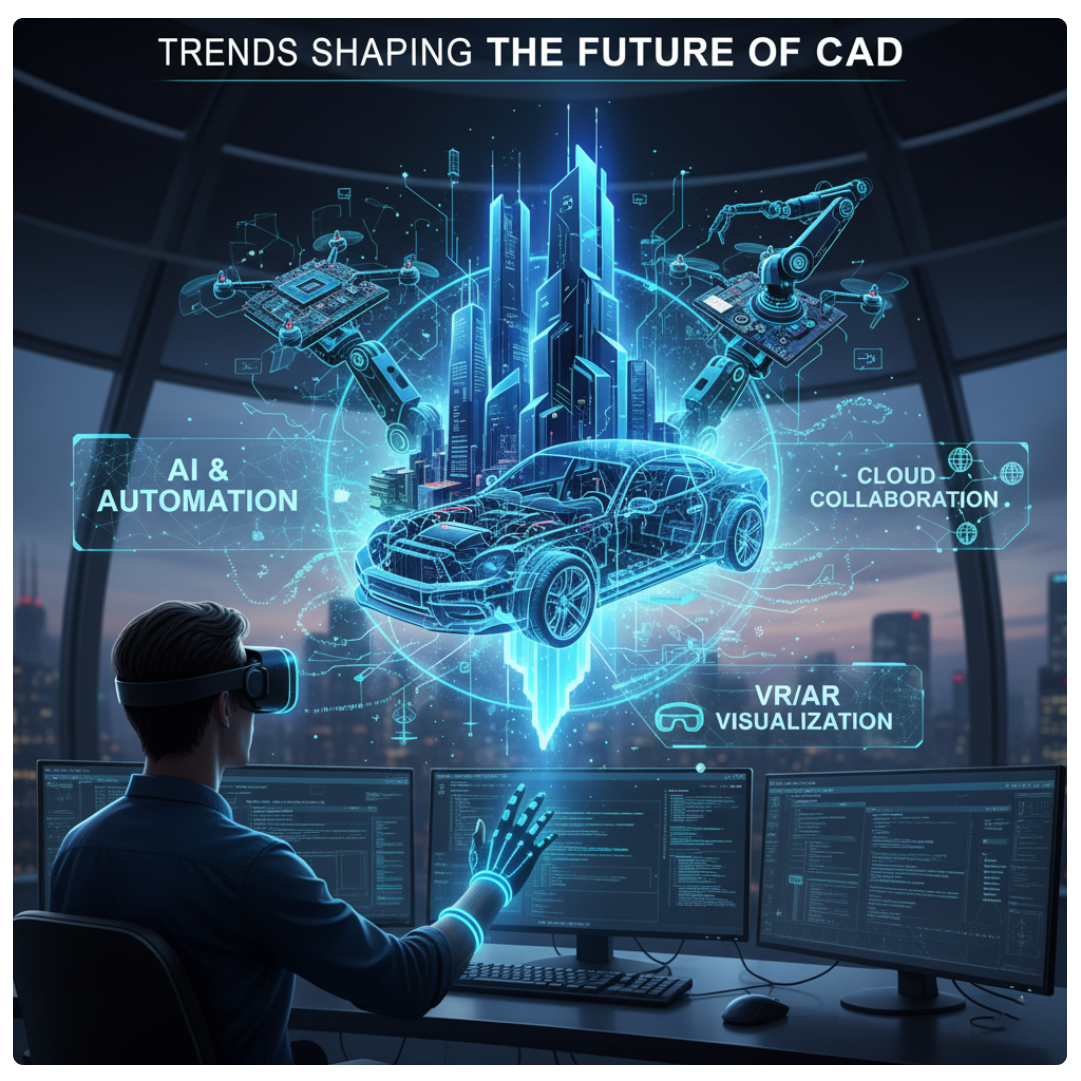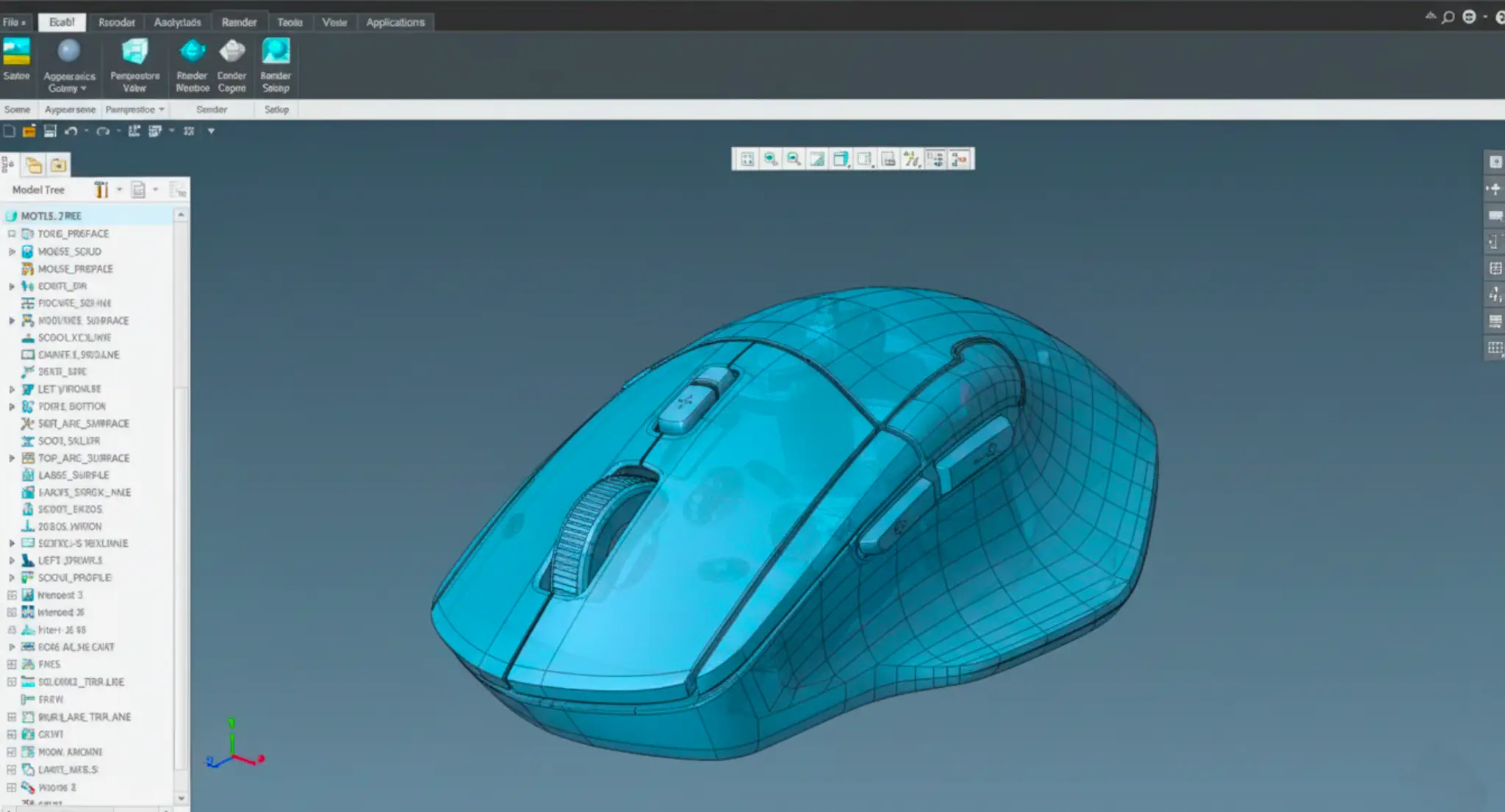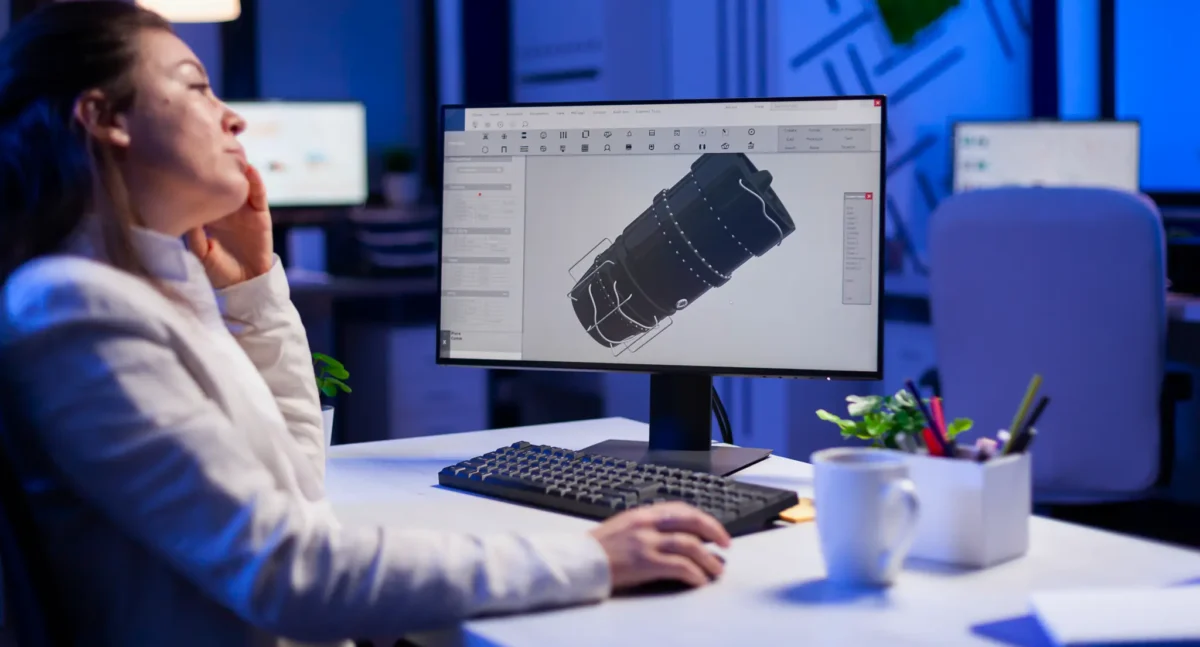If you live and build in Miami, you’re surrounded by innovation whether you notice it or not. From the electric-blue skyline rising over Brickell to the sculptural curves of the Pérez Art Museum, from sleek yachts anchored in Fort Lauderdale to the cutting-edge medical tech emerging from Miami Lakes, this city is a magnet for bold thinkers. It’s a place where ideas don’t stay ideas for long.
And behind nearly every breakthrough product, architectural feature, consumer gadget, or marine innovation you see in South Florida, there’s one quiet force shaping it all: CAD modeling.
But the world of CAD (Computer-Aided Design) is evolving faster than ever. The software tools that once lived only on powerful desktops are now infused with AI, immersed in virtual reality, and capable of generating fully optimized designs automatically. This isn’t the CAD your engineering professor taught you. It’s smarter, faster, connected, and incredibly exciting for anyone building products in Miami.
At Shark Design, a Miami-based product design and development company, we’re right in the middle of this transformation. We don’t just use the future of CAD, we help bring it to local entrepreneurs, inventors, and businesses who are shaping the next wave of innovation in South Florida.
In this article, we’ll walk you through exactly how the future of CAD modeling is transforming product design in Miami, why it matters for your business, and how these new tools can help you move from idea to market faster than ever.
A Quick Look Back: From Drafting Boards to Miami’s Design Revolution
Before we jump into the future, it helps to look back at where CAD began.
Not too long ago, engineers and designers worked on large drafting boards with pencils, rulers, and erasers. Every adjustment meant redrawing entire sections by hand. It was slow, meticulous, and extremely limited.
Then came 2D CAD in the 1980s, a game changer. Suddenly, drawings were digital. You could zoom in, adjust lines, and make revisions without destroying the entire blueprint. This era made drafting faster, but the designs were still mostly flat.
Next came 3D CAD modeling, which transformed the process from drafting into digital sculpting. Designers could now visualize objects from every angle, test clearances, simulate movement, and hand off files directly to manufacturers. Instead of guessing, teams could see exactly what a product looked like before it existed.
But just like Miami’s own explosive evolution from a sleepy beach town to a global hub for art, architecture, and innovation, CAD has continued to evolve. The city’s skyline didn’t stop at concrete boxes; it grew into a living canvas of curves, glass, and structural creativity. Likewise, CAD has shifted from static digital drawings into intelligent, connected, and immersive design ecosystems.
Today, we stand at the edge of another revolution, one powered by the cloud, AI, digital twins, VR headsets, and integrated manufacturing workflows.
And Miami is perfectly positioned for it.
The Key Trends Shaping the Future of CAD

Below are the biggest CAD trends reshaping product development, explained in human terms, grounded in Miami realities, and written for the inventor or business owner who wants to build smarter and faster.
Trend 1: The Unstoppable Rise of Cloud-Based CAD
Ten years ago, CAD software lived on a single powerful computer. If you didn’t have the machine, you didn’t have the design.
Cloud CAD changes everything.
What it means
Cloud-based platforms like Autodesk Fusion 360 and Onshape run inside your browser. No installs, no expensive hardware upgrades, no dealing with outdated versions.
Think of it like the difference between old-school Microsoft Office and Google Docs. With Google Docs, multiple people can type at once, edit together, and always know they’re on the latest version, all from anywhere.
Cloud CAD works the same way.
Why Miami businesses love it
Miami’s product ecosystem is spread out, marine engineering in Fort Lauderdale, medical device hubs in Miami Lakes, creative studios in Wynwood, startups in Brickell, manufacturing partners in Doral. Cloud CAD removes the friction.
Teams can work together in real time, see the most updated model instantly, and collaborate without sending huge files.
Miami Scenario
Imagine a marine engineer in Fort Lauderdale, an industrial designer in Coral Gables, and a client relaxing in Key Biscayne. All three open the same 3D model of a new boat cleat in their browser. They rotate it, leave comments, and tweak features, without ever emailing a file.
That’s the new standard of collaboration.
Trend 2: Generative Design — The AI Co-Pilot for Engineers
Generative design introduces a radical shift: instead of manually designing a part, you tell the software what you need, strength, material, weight, cost, and the AI produces dozens or even hundreds of optimized shapes.
What it means
You’re not drawing the design. You’re guiding the design. The AI does the heavy lifting, simulating forces and creating shapes that no human would think to sketch.
Why Miami businesses love it
Miami’s design culture thrives on creativity, from Art Deco to Wynwood murals. Generative design fits right in because it produces forms that feel organic and sculptural but are incredibly efficient.
It’s perfect for:
- marine tech components
- lightweight medical devices
- hurricane-tested outdoor products
- high-strength mobility equipment
- custom consumer goods
Miami Scenario
A startup in Wynwood is creating a new line of hurricane-resistant outdoor furniture. They input constraints like “must withstand 120 mph winds,” “must be lightweight,” and “use aluminum.”
Generative design produces structures inspired by natural branching patterns, strong, lightweight, beautiful, reminiscent of shapes you’d see in the Everglades.
Trend 3: VR/AR — Stepping Inside Your Design
Virtual Reality (VR) and Augmented Reality (AR) are turning CAD from something you view on a screen into something you can walk around, touch, and interact with.
What it means
With VR, you can put on a headset and step inside a full-scale model.
With AR, you overlay a design onto the real world, like dropping a virtual faucet onto your actual countertop.
Why Miami businesses love it
Miami is a visual city. Whether you’re designing a luxury yacht railing, a new hotel room accessory, or a fitness device, seeing it at full scale before it exists helps everyone make faster decisions.
Miami Scenario
A medical device company in Miami Lakes prototypes a new surgical handheld tool. Instead of waiting weeks for a physical prototype, the surgeon puts on a VR headset and “holds” it. They test grip, weight distribution, and angles long before manufacturing.
Or imagine an interior designer showing a Sunny Isles homeowner exactly how a custom luxury faucet will look, right in their real bathroom, through AR.
That’s powerful.
Trend 4: The Digital Thread & The Rise of the Digital Twin
This is one of the biggest shifts in product development: moving from isolated files to a continuous digital record that follows a product through its entire lifecycle.
What it means
A digital thread is a traceable data trail connecting:
- CAD
- prototyping
- manufacturing
- sales
- maintenance
- product updates
A digital twin is a virtual version of a product that mirrors real-world performance.
Why Miami businesses love it
Because Miami products live tough lives, humidity, saltwater, high usage, and tourist-heavy demand. Digital twins help predict issues before they happen.
Miami Scenario
A Miami-based electric water scooter company gives every scooter a digital twin. As customers ride along Biscayne Bay, performance data syncs in real time. If a motor is running hot or a battery is degrading faster than expected, the company gets an alert, and proactively reaches out to schedule service.
Customers are impressed. The brand builds loyalty. Safety improves.
Trend 5: Additive Manufacturing (3D Printing) Integration
CAD today isn’t “design first, print later.” It’s fully integrated with additive manufacturing tools that optimize models specifically for 3D printing.
What it means
You can design:
- lattice structures
- weight-reduced parts
- complex geometries
- multi-part assemblies consolidated into one print
And you can print prototypes overnight.
Why Miami businesses love it
Speed. Flexibility. Local production. When deadlines for Art Basel, boat shows, or hospitality installations are tight, 3D printing keeps things moving.
Miami Scenario
A fashion designer in Wynwood prepares for an Art Basel pop-up. Using CAD optimized for additive manufacturing, she prints custom jewelry pieces overnight, each one intricate, lightweight, and unique.
The next morning, it’s ready for display.
What This Future Means for Innovators and Businesses in Miami

All these trends lead to one big truth:
Product development in Miami is about to get faster, smarter, and more collaborative than ever.
Here’s how it translates into real business advantages:
Faster from Idea to Market
Cloud CAD + VR + generative design = a product cycle that moves in weeks instead of months.
In a competitive city like Miami, where marine companies, fitness startups, hospitality brands, and local makers are pushing out new ideas constantly, speed is everything.
Lower Risk & Lower Costs
With digital testing, real-time visualization, and 3D printing, you reduce the number of physical prototypes. That means:
- less waste
- fewer manufacturing errors
- better early decisions
- fewer “surprises” in production
Smarter, More Innovative Products
With AI-powered design tools and digital twins, your final product isn’t just functional, it’s optimized. Stronger. Lighter. More efficient. Better looking.
More Transparent Client Collaboration
Miami clients love being involved. With cloud tools and VR walkthroughs, you don’t just observe the design process, you experience it.
This empowers you to make high-confidence decisions earlier and stay connected from concept to final prototype.
How Shark Design Navigates this future
At Shark Design, we aren’t just watching the future unfold, we’re building with it.
We design, model, and develop products for startups and established businesses across Miami, Fort Lauderdale, Doral, Wynwood, West Palm Beach, and the entire South Florida corridor. And we bring the latest CAD technologies into every project.
We use generative design tools to explore lightweight and high-strength options for Miami’s marine, medical, and consumer product industries. We integrate CAD with digital manufacturing, ensuring seamless transitions into CNC machining, 3D printing, and mass production.
Our Philosophy
CAD tools are powerful, but they’re just tools. What matters most is how we use them to bring your idea to life in a way that matches Miami’s energy, pace, and ambition.
Conclusion
Miami has always been a city that builds forward. We reinvent, reimagine, and push boundaries, whether it’s in art, architecture, marine innovation, or product development. Today, the future of CAD modeling is giving Miami’s creators even more creative freedom and precision than ever before.
This new era isn’t about replacing designers with algorithms or replacing human creativity with automation. It’s about empowering Miami’s innovators, giving them tools that help them think bigger, move faster, and create smarter products that stand out in a competitive world.
The future of CAD is immersive. Intelligent. Collaborative. And very, very exciting. And here in Miami, with its vibrant culture and unstoppable momentum, that future is already happening.

